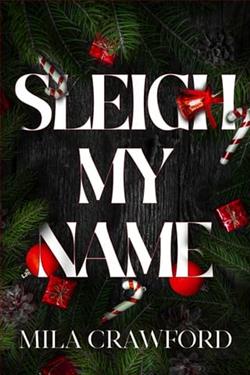Page 12 of Go Home
Did Father Thomas convert?Someone angry?
The hymn on the opposite side was called “None but Thee,” a translation of a sixth century Irish hymn, full of swords and shields, staffs and battle trumpets and countless other images of warfare.The composer of the hymn was saying that their armor and weapons were useless without faith in God.Reminded, suddenly, what Annie had said about the priest, Kate wrote:
Did FT have faith?Someone find out he didn’t?
It might have looked like tinkering at the edges, but this was often how the answer came about: a complex interplay between symbols, numbers, meanings, and allusions.When training as a cryptanalyst, she’d learned to ignore that inner judge which says what’s relevant, what’s likely, what’s pie-in-the-sky.In its place, she’d mastered free-association –like jazz, but with thoughts, as her mentor, Gabe Levine, once put it – considering every angle, like a sniffer dog sticking its nose everywhere at once.
Turning her thoughts to the page with the Z shapes, Kate noticed that the lines were less neat than the circles on the other side.In each of the three shapes, the line bisected some letters, clipped the top or the bottom of some, and bypassed others completely.However, the letter at each corner of the shapes began at a precise point underneath it – by enlarging the image, Kate could see that there was a barely perceptible dot, as if the author had deliberately placed their pencil there before beginning to sketch the line.
So they cared about the letters at the beginning- and end-points of each line, the corner-points of each shape.But why?
Testing a theory, Kate looked at the letters next to each corner-point.The letters D and B, and I and Q formed the horizontal lines of the “Z,” and the diagonal was between the letters B and I.She clicked an app on her laptop and jotted down the numbers 23, 6, and 7.She went through the same procedure with the second Z shape, writing down another trio of numbers: 5, 32, and 17.And finally, the third: coming up with 2, 20, and 3.
Next, she downloaded an online version of the church hymn book.She looked up the twenty-third page, counted down to the sixth line and the seventh word.“Chalice.”Well, it was a start.The same method applied to the other two trios of numbers yielded “Redeemer” and “Viol”.Chalice – redeemer – viol.Somehow, she doubted that was the message.What the hell was a “viol,” anyhow?
But Kate was now certain she recognized the code in front of her, and that the numbers were coordinates, directions pointing her towards words or letters in a textual key.Of course, that text could be one of a trillion texts in existence: the Qumran Scrolls, a handout from a Des Moines pizza joint, or a Tennessee teenager’s first sappy love letter.But people didn’t put things in code so that nobody could read them.They encrypted them so thatsomebodycould decrypt them.Whoever sent that message to Kate, wantedherto work out what it said.
Why that was the case, she didn’t know.But if she could work out what they were saying, she might then understand why it was important to say it to her.And if they wanted her to interpret the code, then the key had to be something connected to her, or to the crime scene, or the victim.
She continued with the page-line-word process, adding “serpent,” “gracious,” “soil,” “Higgins,” “foot,” “temple,” and other words to a list that continued to make no sense, however she ordered it.It was getting to look like the hymn book really wasn’t the key.So what could it be?
Think.
She returned to the hymns themselves, looking for patterns, frequent letters and words, line-endings, stanzas.She went back to the authors of the words, the composers of the music.Discovered that the person who’d translated the war-song from its original sixth-century Irish had been born in 1823 and died at the age of sixty-seven.23, 6, 7… And she remembered some further wisdom from the man who’d mentored her, first as a student, then on the rocky path from academia to federal agent.Patterns can be found everywhere, and most of them are meaningless.
She was so absorbed in her task that she jumped, cartoon-style, when she realized there was a steaming cup of coffee and a donut at her elbow.She looked up to see Marcus grinning.
“Cracked yet?”
“Imight be cracked.But the code?”She rubbed her eyes.“Thanks for the coffee, but I’ll pass on the donut.I’m going to end up looking like a weather balloon.”
“Yeah, right,” he said, automatically.“He must have had a key.”
“I know,” she said, still wrapped up in the puzzle.“Wait – what?Who must have?”
“The killer must have had a key.They found the lock to the confession box door in the debris.Solid iron, didn’t melt.The killer locked Father Tom in there, and apparently took the key with him.I had a quick word with his housekeeper lady.She was in a rush dropping a kid off, but she said he had a box full of church bits and pieces in his study.”
“What are we thinking?The killer took it from his box?”
“If that’s the case, then they had to know him pretty well.Him, and the day-to-day business of the church.There’s a committee of church members who take care of everything: weeding the garden, cleaning the hall.She’s given me names.And he had an assistant last year.”
“A curate?”
“That’s the word.A trainee priest, right?Zbigny-something.Polish.They didn’t get along.”
“How so?”
“The curate was very religious.Thought Father T was, I dunno, not up to the mark.”
Kate looked at the note she’d made earlier.Did Father Thomas have faith?She remembered Annie’s words in the diner.He really wasn’t like a priest.
“We need to talk to the curate.”
“And look over the house.How you getting on?”
“Stuck.”
Marcus looked at her desk, pages of scrawled notes.















